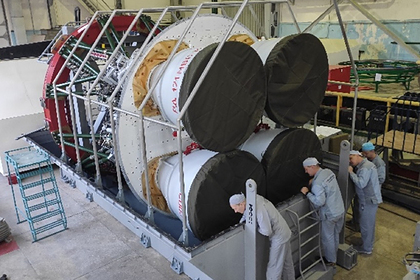The RD-171MV power unit, known as the Tsar Engine, was sent for assembly as part of the first stage of the Russian promising Soyuz-5 rocket, which should replace the decommissioned Ukrainian Zenit-2 carrier. This was announced on Twitter by the CEO of Roscosmos Dmitry Rogozin.
"The engine has passed fire tests, which confirmed the quality of the engineers' design and technological solutions," the head noted.
The product was sent from the Khimki Research and Production Association (NPO) Energomash to the Samara Rocket and Space Center (RCC) Progress, which "completed a series of static tests of the fuel tanks of the first stage of a promising rocket." "The design of one of the two prototypes was brought to destruction by internal test pressure," the Roscosmos TV studio showed on Twitter the corresponding video.
The Progress Rocket and Space Center has completed a series of static tests of the fuel tanks of the first stage of the promising Soyuz-5 launch vehicle. The design of one of the two prototypes was brought to destruction by internal test pressure. pic.twitter.com/jMb0KV9bU2- ROSCOSMOS TV (@tvroscosmos) October 28, 2021
In March, Roscosmos announced that NPO Energomash had completed a three-month cycle of eight firing tests of the first RD-171MV liquid-propellant rocket power unit.
In August 2019, NPO Energomash announced the launch of serial production of the world's most powerful liquid rocket engines RD-171MV.
The RD-171MV is an upgraded version of the RD-170 power unit developed in the USSR for the superheavy Energia rocket.
The launch mass of the two-stage Soyuz-5 rocket is about 530 tons, length - 61.87 meters, diameter - 4.1 meters, first-stage engine - RD171MV, second-stage engine - RD0124MS. Fuel components: the oxidizer is liquid oxygen, the fuel is naphthyl. The mass of the payload launched into low Earth orbit from the Baikonur cosmodrome is about 18 tons. Flight tests of the carrier are scheduled for 2023.
Ivan Potapov

